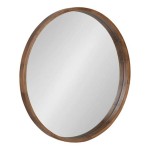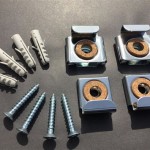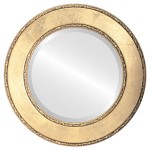What Type of Image Does a Convex Mirror Produce?
Convex mirrors, characterized by their outward curvature, are renowned for their ability to provide a wider field of view than plane or concave mirrors. This characteristic makes them invaluable in a range of applications, from security surveillance to automotive side mirrors. Understanding the type of image produced by a convex mirror is crucial for effectively utilizing these versatile optical tools.
Convex mirrors always produce a specific type of image: **virtual, upright, and diminished (smaller than the object)**. To understand why, it's essential to delve into the principles of reflection and image formation.
Light rays emanating from an object placed in front of a convex mirror diverge upon reflection. These diverging rays, when extended backward behind the mirror's surface (using dotted lines in ray diagrams), appear to converge at a point. This point of apparent convergence is where the virtual image is formed. The image is termed "virtual" because the light rays do not actually converge at that point; they only appear to do so. No real image can be formed on a screen placed behind the mirror.
The upright nature of the image signifies that the image's orientation is the same as the object's. If the object is right side up, the image will also be right side up. This contrasts with the inverted images that can be formed by concave mirrors under certain conditions.
The diminished size of the image means that the image appears smaller than the actual object. This reduction in size is directly related to the diverging nature of the reflected rays. The further the object is from the mirror, the smaller the image appears.
The field of view offered by a convex mirror is significantly wider than that of a plane mirror of the same size. This characteristic is a direct consequence of the diverging reflection of light rays. The outward curvature allows the mirror to gather and reflect light from a broader range of angles, effectively expanding the observable area.
The relationship between object distance, image distance, and focal length for a convex mirror is governed by the mirror equation: 1/f = 1/do + 1/di. Where 'f' represents the focal length (which is negative for convex mirrors), 'do' represents the object distance, and 'di' represents the image distance. The image distance is always negative for virtual images formed by convex mirrors, further emphasizing the fact that the image is formed behind the mirror's surface.
Magnification, the ratio of the image height to the object height, is also relevant. For convex mirrors, the magnification is always less than 1, indicating a diminished image. It can be calculated using the formula: M = -di / do. The negative sign signifies that the image is upright.
The practical applications of convex mirrors are numerous and exploit the unique characteristics of the virtual, upright, and diminished image they produce.
In vehicles, convex mirrors serve as passenger-side view mirrors. The wider field of view allows drivers to see a larger portion of the road behind and beside them, mitigating blind spots. The diminished size of the image, while making objects appear further away than they actually are, enables a broader perspective of the surrounding traffic.
Security mirrors, often employed in shops and public spaces, utilize the wide field of view to monitor large areas. While the diminished size of the image makes individual details less clear, it allows security personnel to observe a larger area at a glance.
Convex mirrors also find applications in certain optical instruments and telescopes. They can be used to diverge light rays, creating a virtual image that serves as an object for subsequent lenses or mirrors within the system.
Furthermore, convex mirrors are sometimes used in interior design to create an illusion of spaciousness. The reflected image of the room, albeit smaller, adds depth and perspective to the space.
In scientific research, convex mirrors can be used in experiments involving light reflection and image formation. Their predictable behavior makes them valuable tools for demonstrating optical principles.
The unique properties of the images formed by convex mirrors – virtual, upright, and diminished – combined with their wide field of view, make them essential components in diverse fields. From enhancing road safety to aiding security surveillance and contributing to scientific research, convex mirrors play a significant role in our technological landscape.
Can A Convex Mirror Form Magnified Image Quora
Can A Convex Mirror Produce Real Image
Can A Convex Mirror Produce Real Image When The Object Is Virtual And Vice Versa Concave If Yes How Will It Be Possible Why Quora
Can Convex Mirrors Produce Lateral Inversion Quora
Why Does A Convex Mirror Form Small Image Quora

Question Identifying The Maximum Size Of An Image Produced By A Convex Mirror Nagwa
Can A Convex Mirror Form Real Image Quora

Convex Mirror Definition Equation Examples Lesson Study Com

Convex Mirror Image Formation Conditions Ray Diagram Uses
What Type Of Image Does A Plane Convex Or Concave Mirror Produce Quora








